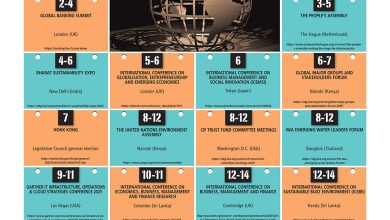THE SILVER TSUNAMI
ASIA’S AGEING POPULATION
Yamini Sequeira reports on the repercussions of Asia’s rapidly ageing population

The Asian Development Bank Institute (ADBI) and Asian Growth Research Institute (AGI) hosted a conference titled ‘Aging in Asia’ in November – in Kitakyushu, Japan – to bring together well-known scholars and experts to debate issues relating to the ageing of Asia’s peoples.
Focussing on major challenges for Asian economies arising from ageing, participants at the conference sought to identify policies to meet such issues in ways that support sustainable and inclusive growth.
Ageing populations pose a fiscal challenge due to old age-related spending especially on health insurance, long-term care and pension benefits. The International Monetary Fund (IMF) has estimated that many emerging economies will face substantial increases in public spending on pensions and healthcare services with an average rise of seven percentage points of GDP between 2010 and 2050.
It is estimated that by 2030, 20 Asian countries will have reached this final phase of the demographic transition.
The Asian Development Bank (ADB) has long focussed on how economies can manage the challenges posed by ageing. One of its reports on the issue notes that during the 1950s and ’60s, most Asian populations were relatively young. But as the proportion of children has declined rapidly since 1970, the relative sizes of two other groups – i.e. people of working age between 15 and 60, and those over 60 – have risen.
The effects of this phenomenon have been noticeable in many countries, with Japan being the most notable.
Another economist notes that old-age income support and social services in Asia are emerging challenges. An ageing population implies a reduction of the working-age population, which could slow the strong economic growth that Asian economies have demonstrated in the last decade.
As a result, an ageing population could have a direct impact on strident economic growth in the Asian region.
One notable feature of Asia’s demographic transition is its exceptional speed, observes the ADB. While the basic picture is the same worldwide, Asia is ageing more rapidly than elsewhere primarily because fertility rates have declined faster.
Economists argue that as the first group of ageing societies in Asia – which includes Japan, South Korea, Singapore, Taiwan and China – are all relatively rich, many of the institutional elements that are important in such societies are in place. But Asia’s next wave of ageing economies may be less prepared to meet these challenges because the speed at which their age structures are changing is unprecedented in human history, they say.
In fact, ageing is occurring more rapidly than development. In such a scenario, economists note that the concern is not wealth per se, but that the financial and political institutions that are imperative for ageing societies may be relatively underdeveloped.
The answer to this challenge lies in adopting a solid approach to sustaining economic growth and providing financial security for the elderly. This could strike the right balance between assets and public transfers while promoting high rates of human capital investment.
Another developing reality is that in countries such as Sri Lanka, traditional means of old age support that were mainly family-based are eroding while modern safety nets like national pension and insurance schemes have yet to reach the elderly.
Asia’s governments spend less on social protection systems for their elderly than their counterparts in not only advanced economies but Latin America as well.
A lack of working-age labour is already a challenge in Sri Lanka and elsewhere. To tackle the crunch in East Asian labour markets, the World Bank recommended policies such as encouraging more women to join the workforce, reforming existing pension schemes and shifting the focus of healthcare from hospital to primary care.
Taking Sri Lanka as an example, if this trend continues unchecked, labour for the construction and plantation industries may need to be imported from neighbouring countries.
Among the most challenging issues facing the region’s policymakers is to “provide adequate income support and healthcare for the elderly without jeopardising growth by imposing excessive burdens on the working-age population,” economists say. Therefore, Asian nations must develop social systems and institutions that can provide economic security to the growing number of elderly while sustaining strong economic growth over the next few decades.
Statistics indicate that the population above the age of 60 in Sri Lanka was 2.5 million in 2012 – that’s 12.5 percent of the nation’s population. But the country is estimated to have an elderly people count of about 3.6 million by 2021, which would be 16.7 percent of its population. And 2041 is expected to see a quarter of the population comprising the elderly which translates into every one in four Sri Lankans being over 60.
How well the country tackles the challenges posed by its ageing population will determine whether Sri Lanka (and other Asian economies) will be able to sustain robust economic growth in the long term.
Home to 55 percent of the world’s elderly population, Asia’s ageing demographic will have serious consequences for many countries throughout the region.





